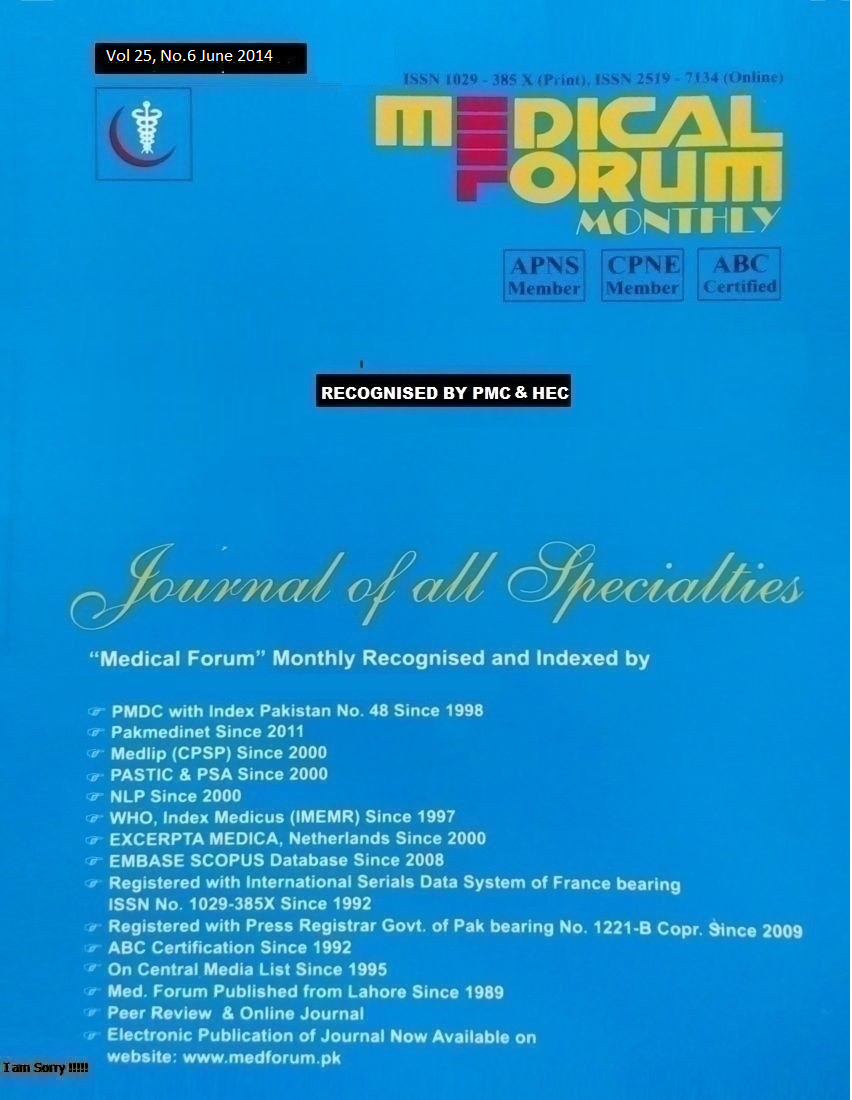
11. An Analysis of Caesarean Birth in A Private Teaching Hospital
1. Rubina Yousaf 2. Saima Jawed 3. Tahira Yasmin 4. Attyia Rashid
1. Assoc. Prof. of Obst. & Gynae, Al Khidmat Teaching Mansoorah Hospital, Lahore 2 & 3. Assoc. Profs. of Obst.
& Gynae, UCMD, Lahore 4. Senior Registrar, Obst. & Gynae, UCMD, Lahore
ABSTRACT
Objective: The objective of this study was to analysis the Caesarean Birth in Private Teaching Hospital. Study Design: Retrospective study
Place and Duration of Study: This study was carried out at the Department of Gynae /Obst Alkhidmat Teaching Mansoorah Hospital, Lahore affiliated with University College of Medicine and Dentistry, Lahore over a period of 1 year from April 2012 to March 2013.
Materials and Methods: The study was carried out to analysis the indications and to assess the maternal mortality and mortality as well as fetal outcome after C/S. The frequency of caesarean section during the study period was about 46%. Indications included, repeat caesarean ( 38.21%), failed inductions (19.9%), fetal distress (15.6%), Ceaphaloplevic disproportions (7.6%) breech presentation (6.36%), APH and PIH (4.7%), Twins and mal presentations (3.82%) and other (3.66%).
 Results: Out of 628 patients (79.62%) were booked patients while (51.6%) patients had elective cesarean section. Anaemia, UTI,PPH and wound sepsis were common maternal complications. Two patients 0.31% died due to complications of surgery or anaesthesia. (97.29%) babies were born alive, (1.43%) were IUD either fresh or macerated while only(1.27%) babies died in the early neonatal period. Although caesarean section rate i.e.46.38% is quite high in our hospital but this is not a true caesarean section rate for a specific population. Majority of the patients who underwent C/s were booked, belonging to educated middle class families having awareness of the complications that may occur during trial of labour.
Results: Out of 628 patients (79.62%) were booked patients while (51.6%) patients had elective cesarean section. Anaemia, UTI,PPH and wound sepsis were common maternal complications. Two patients 0.31% died due to complications of surgery or anaesthesia. (97.29%) babies were born alive, (1.43%) were IUD either fresh or macerated while only(1.27%) babies died in the early neonatal period. Although caesarean section rate i.e.46.38% is quite high in our hospital but this is not a true caesarean section rate for a specific population. Majority of the patients who underwent C/s were booked, belonging to educated middle class families having awareness of the complications that may occur during trial of labour.
Conclusion: Provision of adequate antenatal health services timely identification of high risk cases use of electronic fetal monitoring; involvement of senior, skilled and experienced personnel in the management of obstetrical emergencies are responsible for the apparently higher rate of caesarean section. In order to reduce C/S rate frequency of trial of labor must be increased with the goal of vaginal delivery but without compromising maternal and fetal health.
Key Words: Caesarean Section, Caesarean Section rate, mortality, morbidity APH, PIH and C/S.
